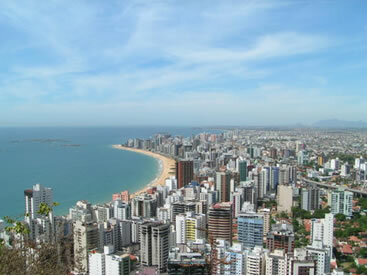The state of Espírito Santo is located in the Southeast region of the Brazilian territory, limited to the states of Bahia (to the north), Minas Gerais (to the west) and Rio de Janeiro (to the south), in addition to being bathed by the Atlantic Ocean (the East). Whoever is born in the state is called capixaba.
Its territorial extension is 46,098,571 square kilometers, divided into 78 municipalities. According to the population count carried out in 2010 by the Brazilian Institute of Geography and Statistics (IBGE), the state population totals 3,514,952 inhabitants. The population density is 76.2 inhabitants per square kilometer and the population growth rate is 1.3% per year. The urban population comprises 83.4% of the inhabitants, the population residing in rural areas corresponds to 16.6%.
The Indian occupied the territory that currently corresponds to the state of Espírito Santo, however, the population was intensified with the migratory flows of miners and fluminenses who were attracted by coffee, which began to be cultivated after 1840.
The population of Espírito Santo is made up of several immigrants, including Italians, Germans, Africans, Poles, Swiss, Austrians, Belgians, Lebanese, among others. The state has one of the largest Italian colonies in Brazil.

Vila Velha, the most populous city in Espírito Santo
Vitória, capital of Espírito Santo, has 327,801 inhabitants, being the 4th most populous city in the state, and has one of the highest Human Development Index (HDI) among the capitals of the country. However, the city has one of the highest homicide rates in Brazil, a consequence of unemployment, disorderly growth, drug trafficking and social inequalities.
The cities of Espírito Santo with population concentration above 100,000 inhabitants are: Vila Velha (414,586), Serra (409,267), Cariacica (348,738), Cachoeiro de Itapemirim (189,889), Linhares (141,306), Colatina (111788), São Mateus (109,028) and Guarapari (105.286).
The life expectancy of the state population is 73.7 years and the infant mortality rate is approximately 17 deaths per thousand live births. About 83.9% of the inhabitants have access to treated water, 67.4% have a sewage system. The state's Human Development Index (HDI) is 0.802, making Espírito Santo the 7th best HDI among the states in Brazil.
By Wagner de Cerqueira and Francisco
Graduated in Geography
Brazil School Team
Holy Spirit - Southeast region - geography of Brazil - Brazil School
Source: Brazil School - https://brasilescola.uol.com.br/brasil/aspectos-populacao-espirito-santo.htm
